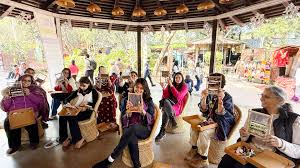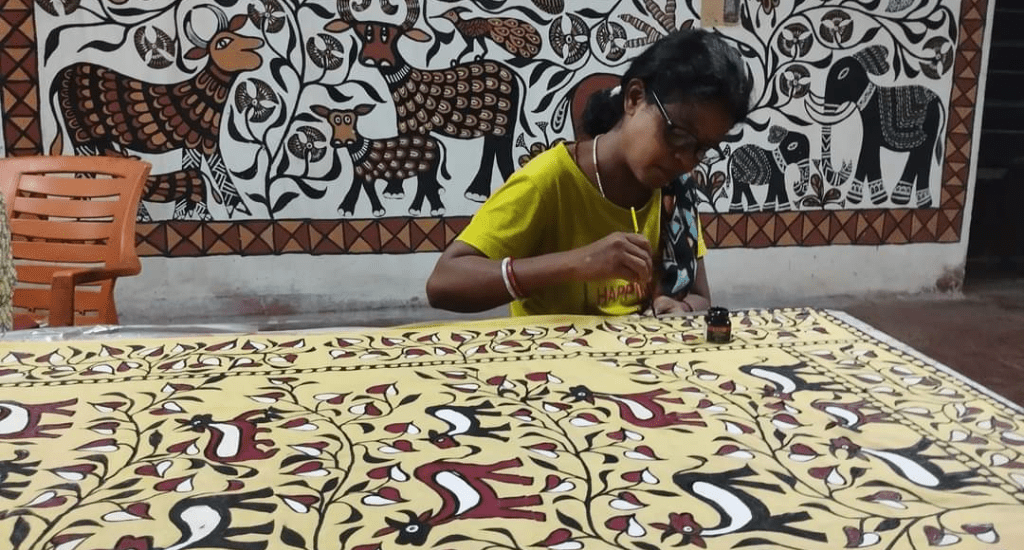
Menu

In Jharkhand, art is an essential part of tribal festivals, infusing celebration with color, rhythm, and symbolism. Festivals such as Sarhul, Karma, and Tusu are more than religious events; they are vibrant cultural expressions that bring communities together.
During these festivals, the tribal people decorate their homes and surroundings with intricate designs and motifs made from rice paste and natural dyes. Art is not confined to walls; it is woven into costumes, dance props, musical instruments, and ritual spaces.
Sarhul, celebrated in the spring, marks the blooming of Sal trees and is accompanied by floral decorations and painted symbols of nature. In Karma, people perform traditional dances with wooden masks and body paint that reflect mythological stories and tribal cosmology.
These artistic expressions serve as a bridge between the spiritual and the material world, strengthening communal bonds and preserving oral histories. Through dance, music, and visual art, the festivals reinforce identity and continuity within tribal society.
Efforts are being made to document and promote these practices, ensuring they remain a vibrant part of Jharkhand’s cultural landscape. Schools and cultural centers now include tribal art in their curriculum to encourage the younger generation to keep these traditions alive.
